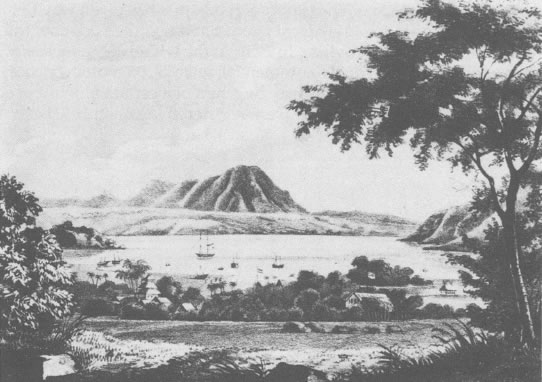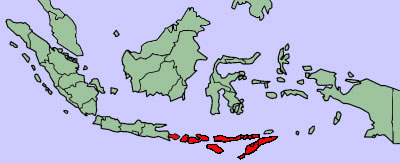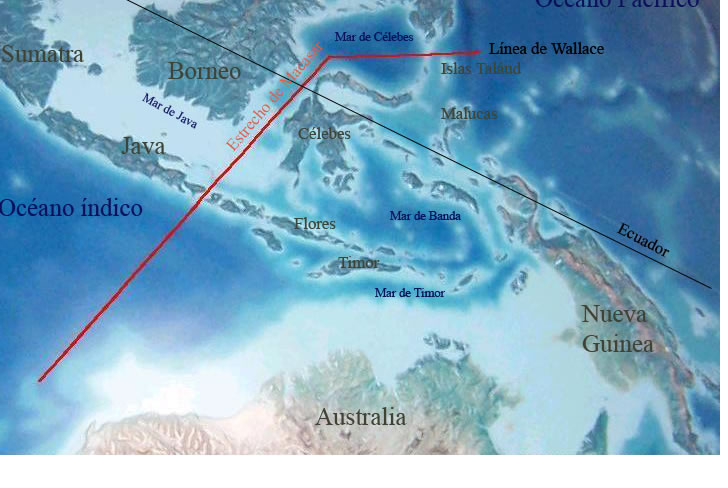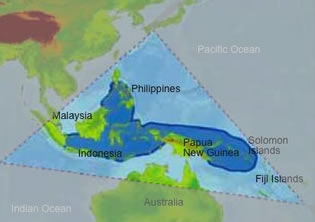|
Collection Point: Bima, Sumbawa
Indonesia's Best Coral is Collected from the Edge of the Coral Triangle
 |
| Bay of Bima in 1821 as engraved by A.J. Bik and published in Reinwardt, Reis naar het oostelijk gedeelte. A mosque and Dutch fort are clearly visible in this engraving, as is the Bay itself and the volcano on the distant shore. |
The Indonesian island of Sumbawa is located in the Lesser Sunda Islands chain on the edge of the famed Coral Triangle (see map below). Bima is both the eastern most regency on the island of Sumbawa and the name of that regency’s capital city. It is also the hub for some of the most colorful, diverse and healthiest Indonesian marine animals bound for the marine aquarium trade.
Sumbawa or Bima?
The island of Sumbawa is part of the West Nusa Tenggara Tangs province and lies to the east of Bali and Lombok. Westerners tend to refer to the whole island as “Sumbawa,” but locally, this name only refers to the western portion of the island. In addition to Sumbawa—which is, politically-speaking, regency—there are three other political entities that make up the island. They are West Sumbawa, Sumbawa, Dompu, and Bima.
Bima exists on the far east of the island and is the hub for collectors of marine livestock. Animals are then usually flown or taken by boat from Bima to Jakarta, where they are exported to a variety of locations including Los Angeles, California (a 12-16 hour flight). Bima City, which is the name of the capital of the regency, is distinctly Arabic, although you need not travel far to find yourself in the heart of a mysterious and intriguing world of indigenous cultures. Despite regional cultural differences, on the whole, the island is heavily influenced by Sulawesi culture with many coastal villages settled by Bugis and Makassarese settlers.
 |
The Lesser Sunda Islands also known as Nusa Tenggara, which translates as the "Southeast Islands" |
Geology & Geography
Geologically-speaking, the island is a volcanic island located within the Pacific Ring of Fire, and Sumbawa’s Mount Tambora has the distinction of being the source of the most destructive volcanic eruption (1815) in modern times. The eruption caused what was commonly referred to as “the year without summer” because of the ash which was distributed into the atmosphere and experienced worldwide in 1816. At roughly 200 miles in length (and nearly 6,000 square mile) , Sumbawa is about three times larger than the better known island of Lombok, although it is not nearly as populous or as well known to Westerners. Nonetheless, Sumbawa’s reefs are some of the finest and most pristine in the region and are held in very high esteem amongst both divers and aquarists.
Sumbawa has been long recognized as a region rich in natural resources. Originally well-known for its honey, sappan wood and sandalwood, the island attracted many traders from all parts of the world. Today, the island of Sumbawa exists at the intersection of Indian and Islamic cultures, with strong influences from indigenous peoples. Like the terrestrial cultures, the marine ecosystems surrounding the Sumbawa are at a biogeographic crossroads.
The Wallace Line & Unspeakable Diversity
 |
| The Wallace Line |
Sumbawa is situated just east of the Wallace Line (named for the English naturalist Sir Alfred Wallace), which is the demarcation between terrestrial Asian and Australasian species. Asian-related species tend to live to the west and Australian-related species generally occur to the east of the line. Although Wallace was primarily interested in birds, contemporary marine scientists interested in biogeographic studies have sought answers beneath the waves to some of the most perplexing questions concerning the evolution of marine species.
More than 600 reef-building corals are indigenous to the area (representing three-quarters of all known coral worldwide), and there are more than 3000 species of reef-associated fishes that call the waters around Sumbawa home. According to Mark Martin, director of marine ornamental research at Blue Zoo Aquatics, “Coral from Bima are some of the brightest and most color diverse of all the Indonesian corals.”
The Coral Triangle
 |
| The Wallace Line |
The Coral Triangle is the most biologically diverse coral reef ecosystem on the face of the Earth. Including Eastern Indonesia, the Philippines, Papua New Guinea, the Solomon Islands, Timor Leste and parts of Malaysia, it is an immense area encompassing over two million square miles (about half of the United States). The Nature Conversancy, which oversees a lot of the conservation work in the Coral Triangle, estimates that, of the more than 150 million people living there, 2.25 million of them make their living as fishermen and, as such, are comepletly dependednt upon a sustainable and healthy fishery. Unfortunately, unsustainable fishing techniques (both overfishing and destructive fishing) are largely responsible for the fact that nearly 90-percent of the coral reefs in Southeast Asia are at risk (Reefs at Risk, World Resources Institute), and so it is more important than ever that all parties with a vested interest in the health of these reefs contribute to conservation initiatives.
Responsibility
As a marine aquarist, one of the best ways you can contribute to conservation efforts is through education. By knowing where your animals originated, and understanding the issues those regions face, you have an opportunity to raise awareness every single time you show someone your aquarium. The marine aquarist has an opportunity to “put a face” on coral reef ecosystems like the Coral Triangle, and in so doing, he or she is promoting awareness that will hopefully lead to conservation and sustainable fisheries that will continue to provide for robust marine aquarium hobby for generations to come.
Published 4 August 2008. © Blue Zoo Aquatics
|